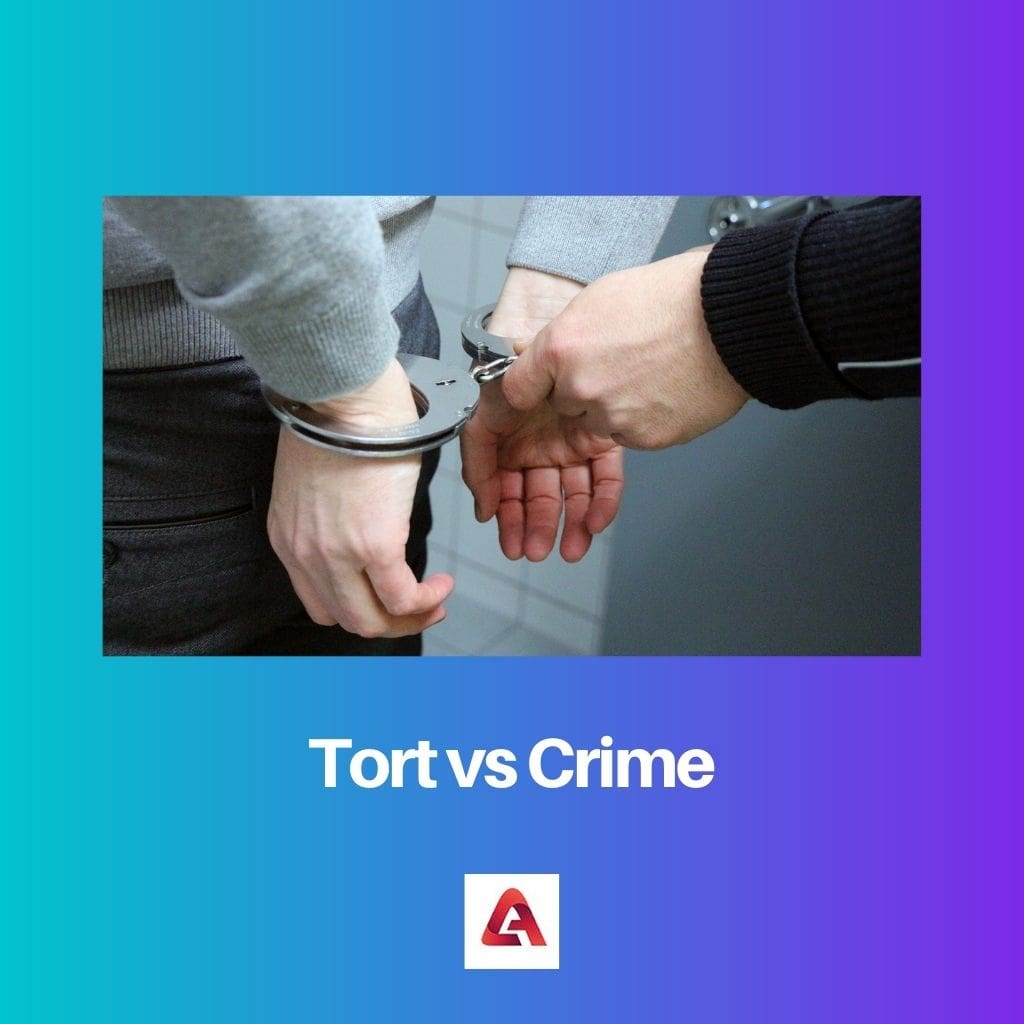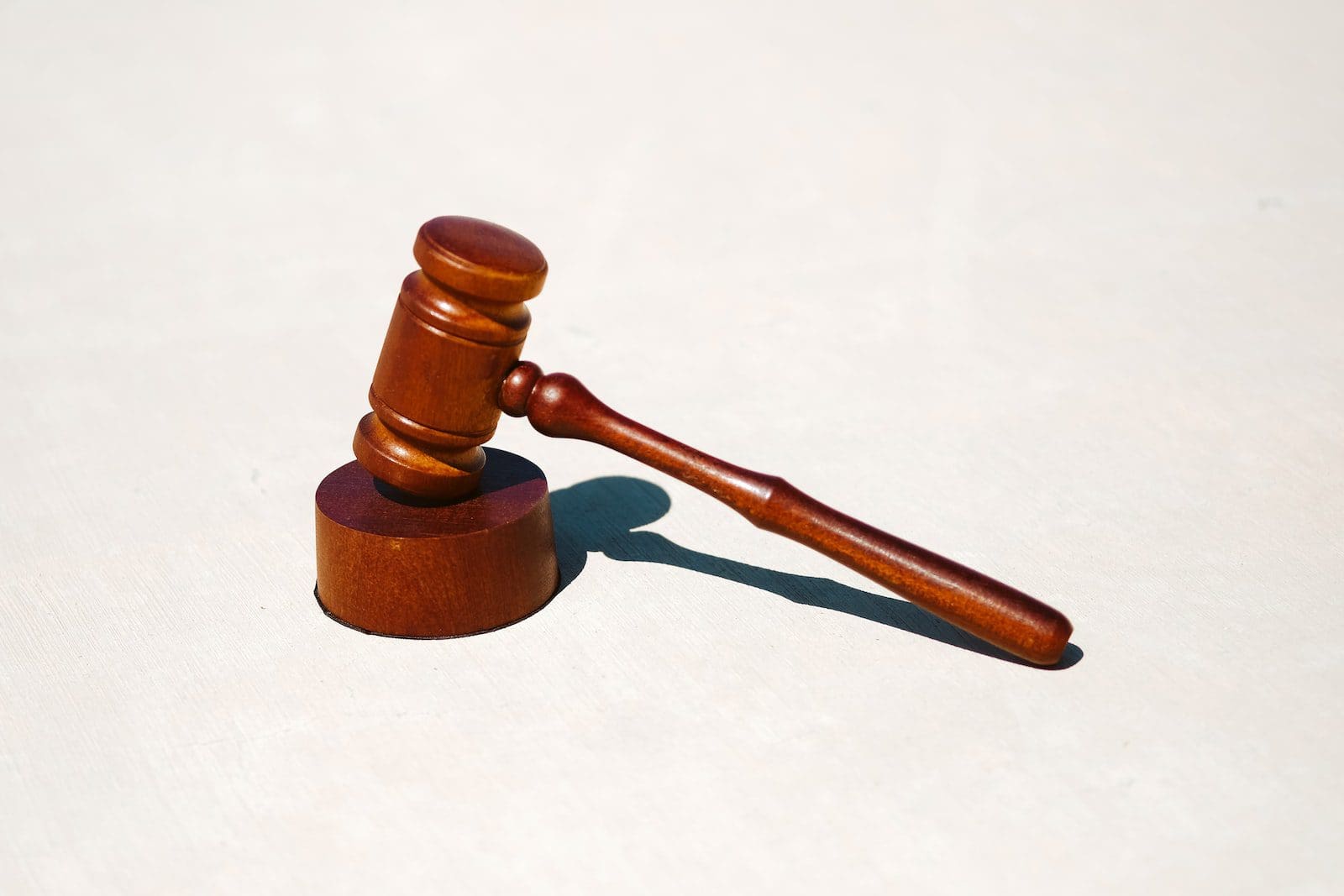Torts are civil wrongs that cause harm or loss to individuals, leading to legal liability. They are addressed through civil lawsuits seeking compensation. On the other hand, crimes are offenses against the state or public, prosecuted by the government, and can result in criminal penalties such as fines or imprisonment.
Key Takeaways
- A tort is a civil wrong that causes harm or loss to another individual, resulting in legal liability and possible compensation to the injured party.
- A crime is an act or omission that violates a law and can result in punishment, such as fines or imprisonment, imposed by a governing authority.
- The main distinction between the two lies in their legal nature: torts are civil wrongs focused on compensation. At the same time, crimes are offenses against society with a focus on punishment.
Tort vs Crime
Tort is a civil wrong that causes harm or injury to another person, resulting in legal liability for the wrongdoer, where, the harm is a civil wrong that causes damage to an individual’s interests. Crime is an offense against society that is punishable by the state through criminal proceedings.

A tort is a new word in the world of crime. Albeit considered the same as crime, its use is subtly different. A tort is a wrongful act of a person that causes considerable mental or physical suffering or loss to a person.
A crime is an offensive and illicit act that provokes intense condemnation from the law and society. It is always intentional and causes great harm to the victim, even the loss of life.
Comparison Table
| Feature | Tort | Crime |
|---|---|---|
| Nature of Wrong | Civil wrong | Public wrong |
| Parties Involved | Victim (Plaintiff) vs. Wrongdoer (Defendant) | State (Prosecution) vs. Accused |
| Objective | Compensation for damages | Punishment for the offender and deterrence |
| Burden of Proof | Preponderance of the evidence (more likely than not) | Beyond a reasonable doubt |
| Standard of Care | Negligence, strict liability, or intentional act | Mens rea (guilty mind) often required |
| Court System | Civil court | Criminal court |
| Remedies | Monetary damages, injunctions | Fines, imprisonment, probation |
| Examples | Negligence (car accident), defamation, product liability | Theft, assault, murder |
What is Tort?
Definition of Tort
A tort can be defined as a civil wrong that causes harm or loss to an individual, leading to legal liability for the wrongdoer. It encompasses a wide range of actions, from intentional acts to negligent behavior, and even strict liability offenses.
Types of Torts
Intentional Torts
Intentional torts occur when a person deliberately engages in actions that cause harm to another. Examples include assault, battery, false imprisonment, and trespass.
Negligence Torts
Negligence involves the failure to exercise reasonable care, resulting in harm to others. Key elements of negligence include duty of care, breach of duty, causation, and damages. Common examples include car accidents and slip-and-fall incidents.
Strict Liability Torts
Strict liability imposes legal responsibility regardless of fault or intent. It applies to certain activities or products that are inherently dangerous, such as ultrahazardous activities or defective products.
Elements of a Tort
Duty of Care
Duty of care refers to the legal obligation to act reasonably and avoid causing harm to others. The existence of a duty is a crucial element in establishing liability.
Breach of Duty
Breach of duty occurs when the responsible party fails to meet the required standard of care. It is a key component in proving negligence.
Causation
Causation establishes the link between the defendant’s actions and the harm suffered by the plaintiff. It includes both actual cause (cause in fact) and proximate cause (legal cause).
Damages
Damages refer to the compensable losses suffered by the injured party. They can be economic (monetary) or non-economic (pain and suffering).
Defenses to Torts
Several defenses can be raised in response to a tort claim, including consent, self-defense, contributory negligence, and assumption of risk. Each defense aims to mitigate or eliminate liability for the alleged wrongdoing.
Remedies in Tort Law
Compensatory Damages
Compensatory damages aim to reimburse the injured party for the actual losses incurred, including medical expenses, property damage, and lost wages.
Punitive Damages
Punitive damages may be awarded to punish the defendant for egregious conduct and deter others from engaging in similar behavior.
Injunctive Relief
Injunctive relief involves a court order requiring the defendant to stop or perform a specific action. It is often sought when monetary damages are inadequate.

What is Crime?
Defining Crime
A. Legal Perspective
Crime, from a legal standpoint, refers to actions or behaviors that violate established laws and regulations. Legal definitions vary across jurisdictions, making it crucial to consider the cultural and legal context when analyzing criminal acts.
B. Societal Perspective
From a societal perspective, crime can be defined as conduct that deviates from accepted social norms. It includes behaviors that disrupt the harmonious functioning of communities and can lead to harm, fear, or distress among individuals.
Types of Crime
A. Personal Crimes
- Violent Crimes: Offenses involving physical harm or the threat of harm to individuals, such as assault, robbery, and homicide.
- Property Crimes: Crimes against property, including burglary, theft, and vandalism.
B. White-Collar Crimes
- Fraud: Deceptive practices intended to secure unfair or unlawful gain.
- Embezzlement: Misappropriation of funds entrusted to an individual.
C. Victimless Crimes
- Drug Offenses: Crimes related to the possession, distribution, or manufacturing of controlled substances.
- Prostitution: Engagement in sexual activities for money.
D. Organized Crimes
- Mafia and Gang Activities: Coordinated criminal activities by organized groups.
- Money Laundering: Concealing the origins of illegally obtained money.
Causes of Crime
A. Sociological Factors
- Poverty: Economic disparities contributing to criminal behavior.
- Education: Lack of access to quality education influencing criminal tendencies.
B. Psychological Factors
- Mental Health Issues: Disorders affecting behavior and decision-making.
- Trauma and Abuse: Experiences leading to maladaptive coping mechanisms.
C. Environmental Factors
- Neighborhood Influence: High-crime environments fostering criminal behavior.
- Drug and Alcohol Abuse: Substance abuse contributing to criminal acts.
Societal Implications
A. Criminal Justice System
- Law Enforcement: Role in crime prevention, investigation, and apprehension.
- Legal System: Adjudication and sentencing of individuals accused of crimes.
B. Rehabilitation and Punishment
- Prison System: Methods of incarceration and rehabilitation.
- Community Programs: Alternative approaches to reintegrate offenders into society.

Main Differences Between Tort and Crime
- Nature of Wrongdoing:
- Tort: Involves a civil wrong or harm committed against an individual or their property, resulting in a legal liability for the wrongdoer.
- Crime: Involves a violation of public law, harming society as a whole, and is prosecuted by the government.
- Plaintiff vs. Prosecution:
- Tort: The victim (plaintiff) initiates legal action seeking compensation for damages.
- Crime: Prosecution is initiated by the government on behalf of society, and the victim may be a witness but doesn’t drive the legal proceedings.
- Punishment:
- Tort: Remedies typically involve monetary compensation (damages) awarded to the plaintiff.
- Crime: Punishments may include fines, probation, imprisonment, or other penalties imposed by the state.
- Intent:
- Tort: Intent may or may not be present; negligence can be sufficient for liability.
- Crime: Often requires a culpable mental state (mens rea), such as intent or recklessness.
- Legal Proceedings:
- Tort: Civil lawsuits are filed by the plaintiff against the defendant.
- Crime: Criminal proceedings are initiated by the government against the accused.
- Burden of Proof:
- Tort: Generally, the plaintiff must prove the defendant’s liability by a preponderance of the evidence.
- Crime: The prosecution must prove the defendant’s guilt beyond a reasonable doubt.
- Objective:
- Tort: Primarily aimed at compensating the victim for losses suffered.
- Crime: Mainly focused on punishment, deterrence, and protecting society.
- Resolution:
- Tort: Often resolved through settlement negotiations or a civil trial.
- Crime: Resolved through criminal trials, plea bargains, or alternative sentencing.
- Example:
- Tort: A car accident resulting in personal injury due to negligence.
- Crime: Robbery, a criminal act involving theft with the intent to deprive someone of their property through force or threat.




